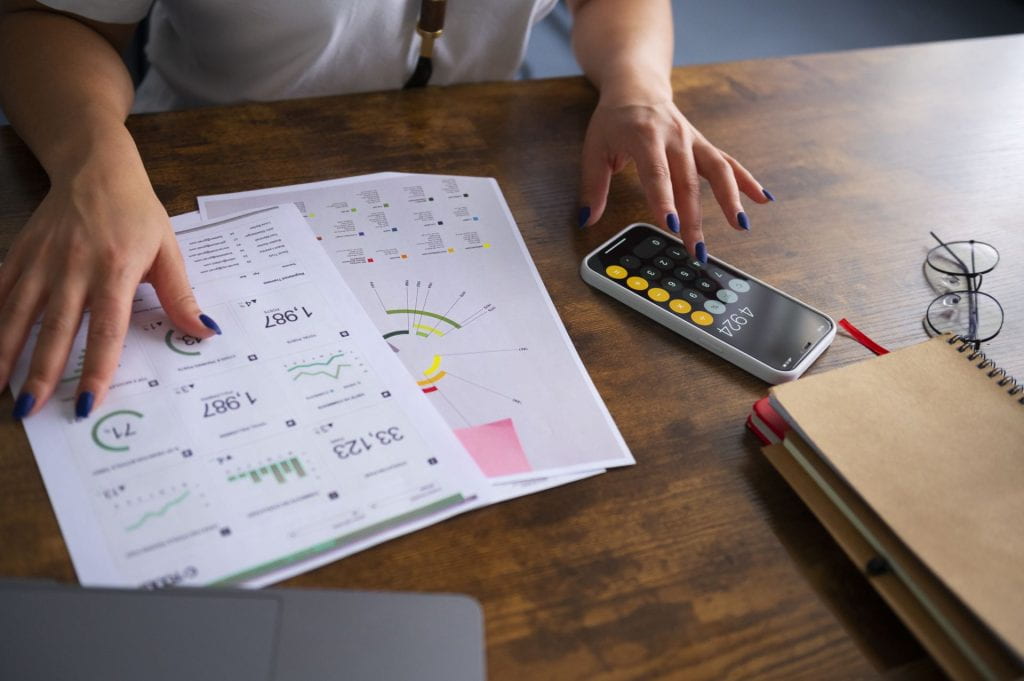A good audio visual presentation is key to effectively getting your message across whether you are giving a speech, teaching a class, or training employees. Putting thought into factors like screen ratio, lighting, sound, and visual aids can make a huge difference in how well your audience understands and engages with your content. In this blog, we will explore some tips for setting up an effective audio visual presentation including using a screen ratio calculator to determine the optimal screen size.

Choosing the Right Screen Size
The size of your presentation screen is an important initial consideration. Using a screen that is too small can make slides hard to see from the back of the room, while one that is too large may be overwhelmingly distracting. When choosing a screen size, you’ll want to consider the size of your room and estimated audience size. A handy tool is a screen ratio calculator, which can help you determine the optimal screen size based on how far back your furthest audience member will be sitting. Taking screen size measurements into account early on will help ensure all of your attendees have a clear view of your slides and demonstrations.
Screen Resolution
It’s also important to choose the right screen resolution that matches the resolution of your presentation files. Projecting a low resolution slide on a high definition screen will result in a blurred or pixelated image. When creating your presentation, be sure to use a resolution that is the same or higher than the resolution your projection screen supports. This will provide the sharpest, clearest image quality possible.
Lighting Setup
Lighting is another critical aspect of any audio visual display. You’ll want to ensure your presentation space has even, consistent lighting without glare or shadows on the screen. Make sure to do a test run of your presentation in the room with the same lighting setup you expect for the real event. This allows you to check for any problem areas and make adjustments beforehand if needed. Draw the blinds or curtains if there is too much light coming from windows. Adjust lamp or overhead lighting as needed. Controlling lighting is key for viewer comfort and keeping attention focused on your presentation, not ambient light sources.
Sound Setup
Just as important as what your audience sees is what they hear. Be sure any audio components like microphones, speakers, and presentation recordings are set up and tested prior to your event. Place speakers on either side of the screen pointing toward the audience for balanced sound. Use a microphone suited for the size of your space. Check for echos and make sure all attendees can clearly hear you speaking and any audio/video clips. Having high quality, properly positioned sound will make your verbal explanations and multimedia significantly more impactful.
Presentation Layout
The visual layout of your actual presentation is also worthy of preparation. Choose a slide design, colors, fonts and formatting that are easy to view from a distance and aid comprehension. Limit text per slide and use large headers, bullet points and visuals instead of walls of copy. Stick to a consistent, cohesive formatting style across all slides. Try viewing your presentation on different devices and screen sizes to check it remains legible. An organized, visually appealing layout will keep your message front and center.
Use of Visual Aids
Multimedia elements like images, charts, diagrams and videos used strategically in your presentation can enhance understanding and retain viewers’ attention much more than bulleted lists alone. Be selective about what visuals to include – only add images that clearly illustrate or prove your main points. Try incorporating interactive elements like polling questions or demonstrations when appropriate. Practice any transitions between pre-recorded content or live speaking segments. Overall, visual aids judiciously sprinkled throughout your AV show keep things interesting while reinforcing your message.
Presenter Prep
You, the presenter, are a key part of the experience too. Prepare well in advance by practicing your speaking points several times aloud, working on fluid delivery and timing. Be familiar enough with the content that you don’t need to read slides word-for-word. Dress professionally and make eye contact with different areas of the audience. Bring any necessary remote controls, cords or accessories needed for the presentation with you. With practice and confidence in both your message and use of the AV tools, you can truly shine!
Conclusion
Putting thought and preparation into factors from screen size to sound quality, visual layout, and your own presenter skills enables you to deliver an audio visual presentation that effectively engages and informs your viewers. Taking the time to set things up properly with the help of tools like screen ratio calculators pays off in ensuring your message comes through loud and clear. With these tips in mind, you’ll be ready to wow your audience!